With 2020 in the rearview mirror, I had hoped 2021 would usher in a reprieve from our troubled world, but it was not to be.
Locally, we've had weeks of 100F+ weather, smoke from wildfires filling the air, and the delta variant of the coronavirus is filling the local hospitals to overflow with unvaccinated (mostly) sick people.

Public domain image (cropped) courtesy of Wikipedia.
2021 has of late taken on a vibe that readers of Dante's Inferno will be able to relate to (above). It's been a hellish environment that we just can't seem to escape from.
What do you do when life is like this?
For me, I try to keep things as normal and edifying as possible, which means a healthy dose of music and audio to soothe any angst I might be experiencing.
Not only are music and audio a great source of entertainment, generally speaking, but psychologists tell us that music provides broader benefits like elevating our mood, giving us something healthy to be excited about, reduces stress, helps us relax, helps us focus, and reduces anxiety and depression.
We could all use a little more of those positive benefits during these trying times!
Speaking of music and audio, that's why you've stopped by, so welcome to Jeff's Place for a healthy dose of music and hifi fun & games!
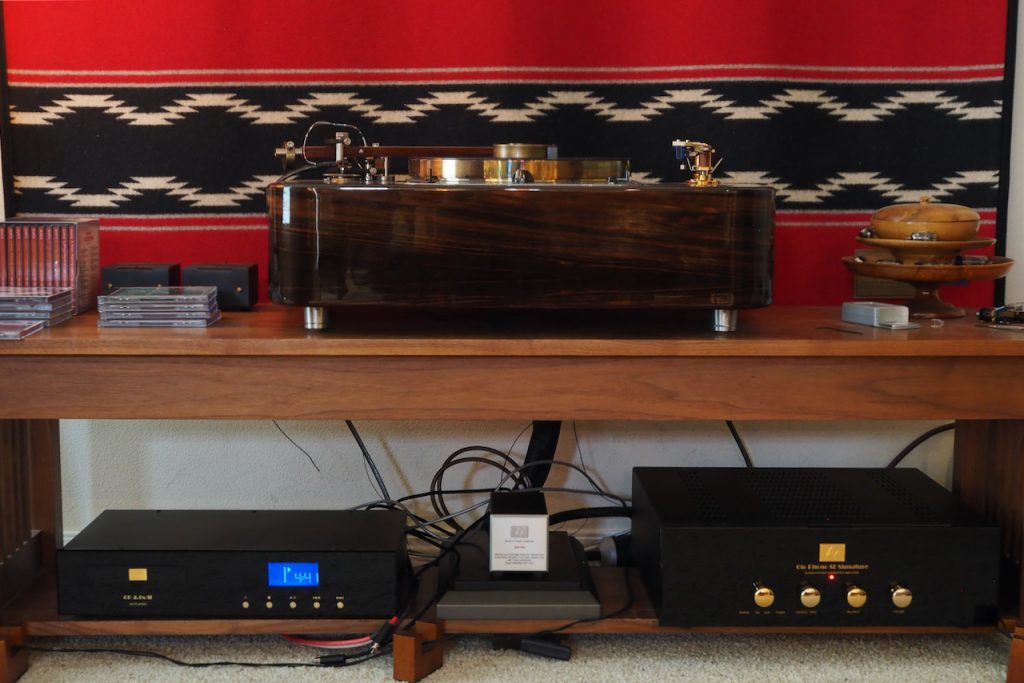
Audio Note (UK) components.
My most recent feature review for Positive Feedback (HERE) was about the combination of the Audio Note (UK) Io I MC phono cartridge, the AN-S4L silver step-up transformer, AN-V silver interconnects, and AN-SPe silver loudspeaker cables. Check it out if you haven't yet.
The Audio Note (UK) components have been a lot of fun to listen to music with, and make for very satisfying listening sessions.
You can buy a complete Audio Note (UK) system - from source to loudspeakers - with the confidence of knowing that all the components are designed to work synergistically together to deliver gratifying listening sessions.
That means there's no guesswork associated with mixing & matching components from different manufacturers, and buying & selling components on the audio merry-go-round until you get balanced performance.
With the Audio Note (UK) kit you can just 'plug and play', which would be a stress reliever for those in the audio hobby who are frustrated with their current 'mix & match' audio system's performance.
For quite a few listeners, I think that attribute makes an Audio Note (UK) audio system an excellent and sensible choice, a healthy form of 'retail therapy'.
For those looking for musical adventures (me), Audio Note (UK) components are impressive in their ability to make music from all of the recording eras come alive as thoroughly enjoyable listening experiences.
Whether I'm listening to albums recorded during the acoustic (1877-1925), the electric (1925-1945), the magnetic (1945-1977), or the digital (1977-now) eras, the Audio Note (UK) components have been extremely satisfying.
The excellent Audio Note (UK) CD 2.1x/II Red Book CD player (HERE) and Audio Note (UK) Io I MC phono cartridge will also be serving as sources for my upcoming Positive Feedback feature article about the new First Watt F8 stereo amplifier from Nelson Pass (below).
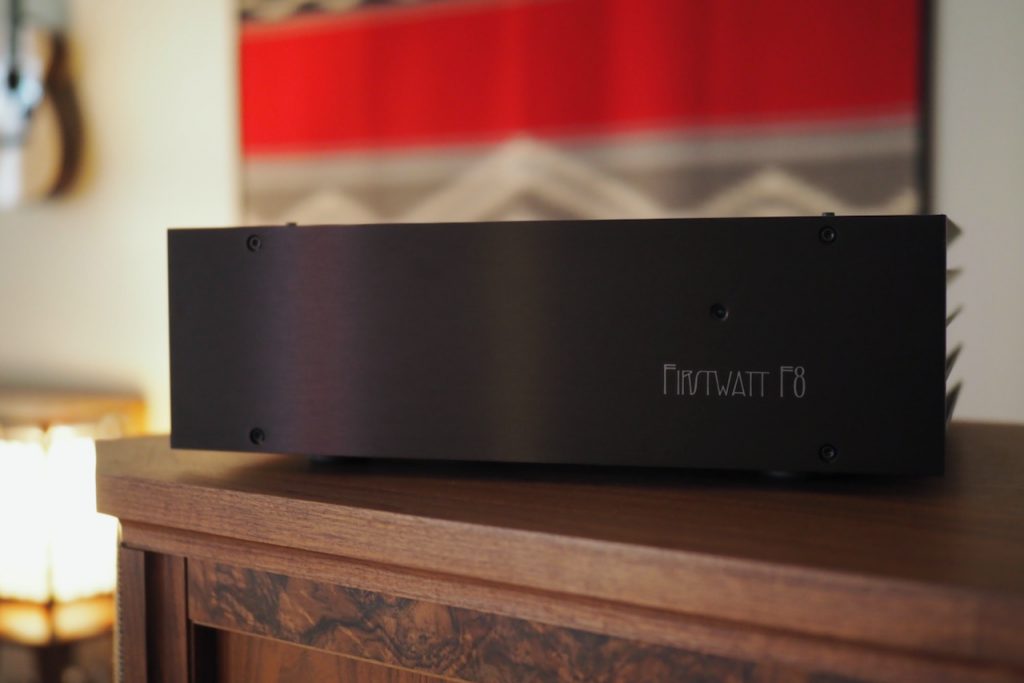
The new First Watt F8 stereo amplifier from Nelson Pass. $4000 USD.
To get ready for that article, I recently installed the First Watt F8 amp, the Pass Labs XP-17 phono stage (more HERE), and the Pass Labs XP-12 line stage (more HERE) into my main music system with my Westminsters (below).
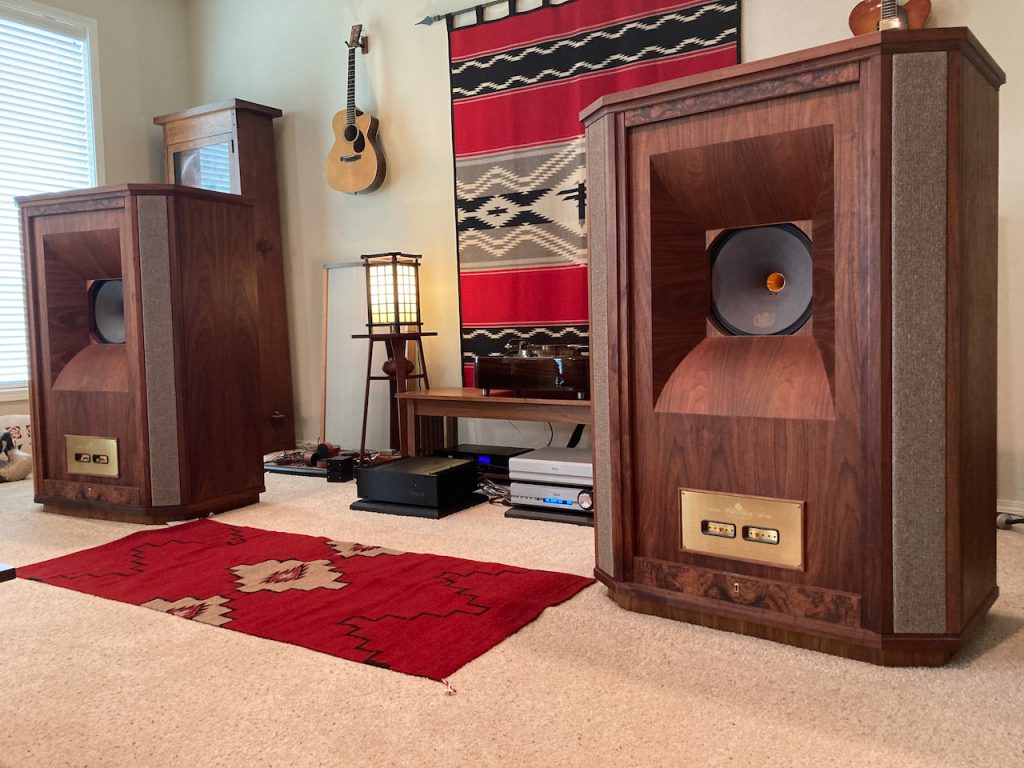
Getting ready for the First Watt F8 feature article for Positive Feedback.
First I got the basic system tonal balance sorted out with a few cable changes, so that performance was excellent with the Audio Note (UK) CD 2.1x/II Red Book CD player playing albums that spanned the recording eras.
I need to get the Pass Labs XP-17 phono stage settings dialed in for the Audio Note (UK) Io I MC phono cartridge, which is the next item on my audio 'to do' list in preparation for the F8 review.
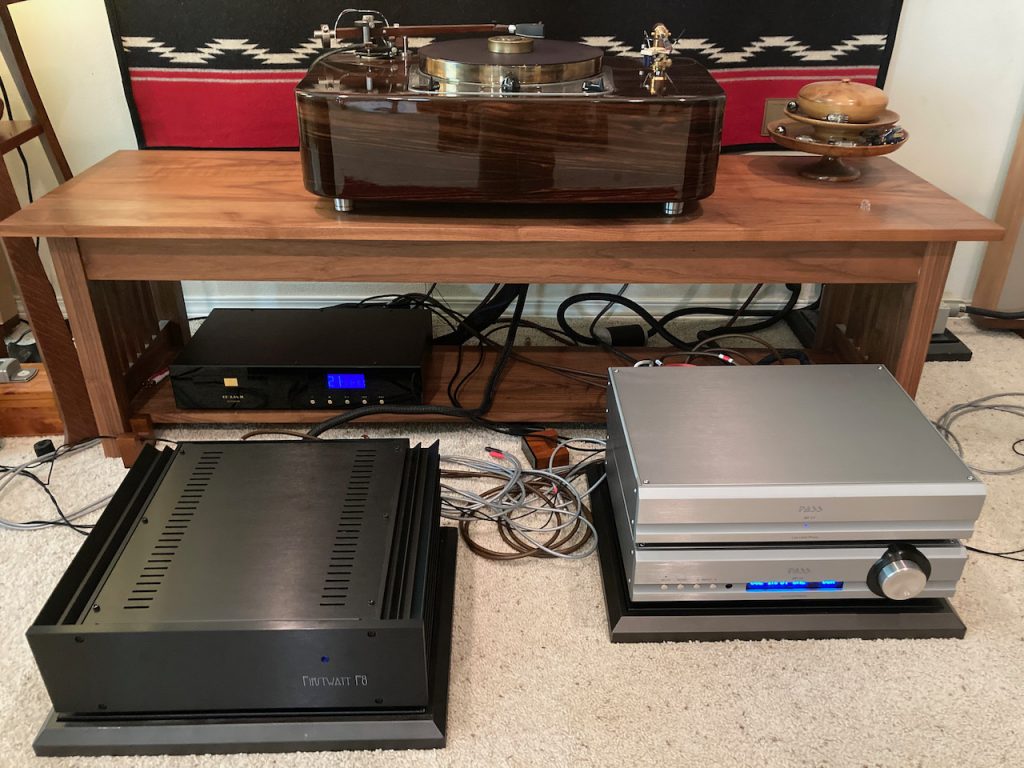
First Watt F8 (left), Pass Labs XP-17 phono stage and XP-12 line stage (right).
I'll tell you what, the Pass Labs XP-17 phono stage is a dream to use for us hifi writers, as its excellent combination of sound quality and musicality, and its high level of adjustability, will allow me to dial in the performance of the Audio Note (UK) Io I MC phono phono cartridge to be complimentary for whatever combination of audio components are in play.
There used to be a lot of debate in audio about solid-state amplification versus vacuum tube amplification by us old codgers.
The debate about solid-state versus vacuum tubes from a sound quality and musicality basis has become a rather meaningless topic of late, as evidenced by the Pass Labs and First Watt amplification from Nelson Pass, which can go toe-to-toe with the best vacuum tube amplifiers and easily hold their own.
Case in point: The new First Watt F8 stereo amplifier is single-ended with two gain stages. That sort of topology used to be the purview of singled-ended-triode vacuum tube amplifiers, but no longer, and as with the First Watt SIT-3 (HERE), and Pass Labs XA 25 (HERE), their performance is very impressive regardless of whether your loyalties are with solid-state or vacuum tube amplification.
In fact, my jazz guitarist friend, David Gitlen, and I have been spending quite a lot of time listening to Nelson's cutting-edge solid-state designs, as well as cutting-edge SET designs like the Triode Lab 45 EVO SET integrated amplifier (below).
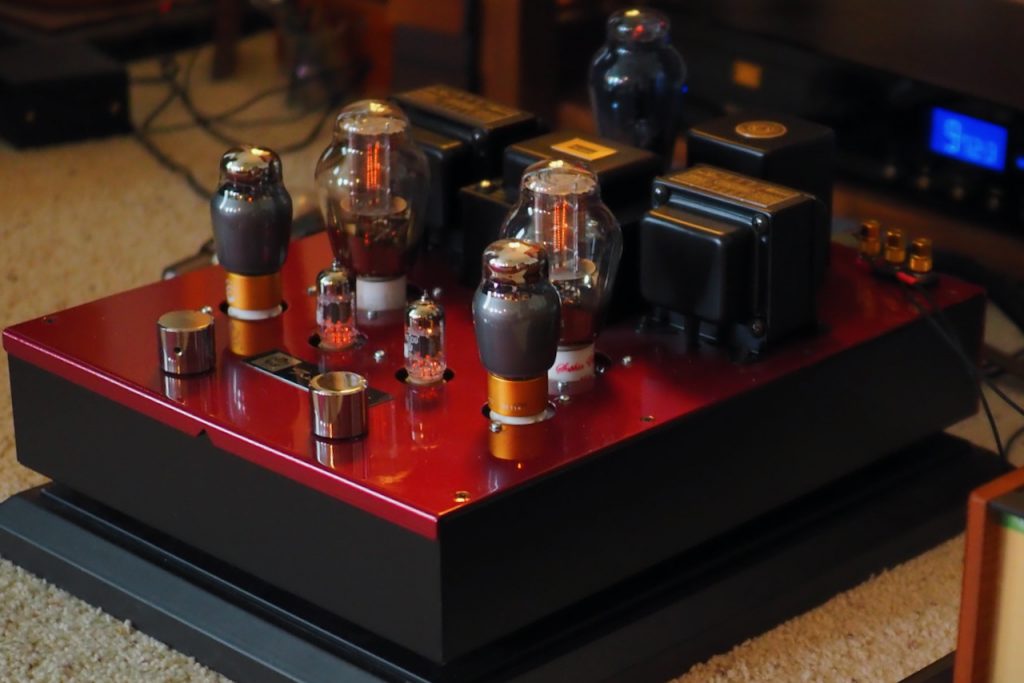
The Triode Lab 45 EVO integrated SET amplifier.
My friend David is not only a great jazz guitarist, but he's also a great judge of audio performance, and he likes both Nelson's solid-state designs and Frank's vacuum tube 45 EVO design about equally well.
The Triode Lab 45 EVO integrated SET amplifier (HERE) is the best sounding amplifier in terms of overall sound quality and musicality that I've ever heard on my Westminsters. Its ability to drive my Westminsters really impressed me, particularly given it has only 2 watts per channel of output power.
If you've got loudspeakers that are sensitive enough (~100dB+), the 45 EVO is a superb amplifier choice for building an audio 'super system'.
Side note: Frank at Triode Lab has allowed me to hang onto the 45 EVO for a while longer (Thanks, Frank!), so I'll be putting the 45 EVO back into my main music system in the future to share more listening adventures with you, which I'll be looking forward to.
My friend David has mentioned to me a couple of times how impressed he is with the performance of both Nelson's solid-state designs and the SET vacuum tube Triode Lab 45 EVO.
I completely agree, they are both single-ended designs with only a few gain stages, both have exceptional performance in terms of sound quality and musicality, demonstrating that the topic of solid-state versus vacuum tube amplification is rapidly becoming a footnote of audio's past rather than a meaningful present debate.
Both of these amplifiers have strengths and weakness - mostly related to their output power - that will make one of them a better choice than the other for particular listeners, depending on their loudspeakers sensitivity ratings.
It sure is a privilege to be able to listen to and tell you about such great amplifier designs, both of which are 'relatively' affordable, and both provide astonishingly high levels of performance that would have been unimaginable back when I first got involved in the audio hobby decades ago.
Are we in the midst of a new Golden Age in audio? Yes, we most definitely are.
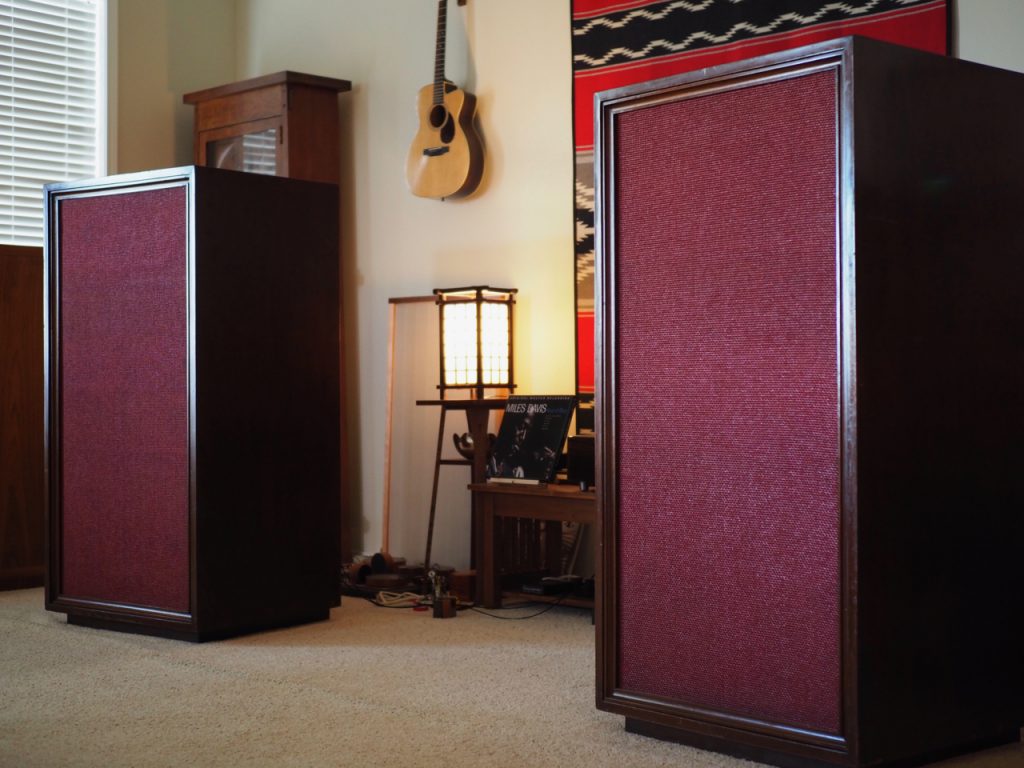
Vintage custom Altec loudspeakers built for conductor Leopold Stokowski.
Some of you have asked me where the 'Stokowski' Altec loudspeakers (HERE) are these days (above). They're still here, and are not going anywhere.
I'm just rotating my 'Stokowski' Altecs and my Tannoy Westminster Royale SE loudspeakers in a 'room sharing arrangement' so they both get playing time on them, which also provides the added benefit of trying audio components with different sets of loudspeakers to see how well they 'play with others'.
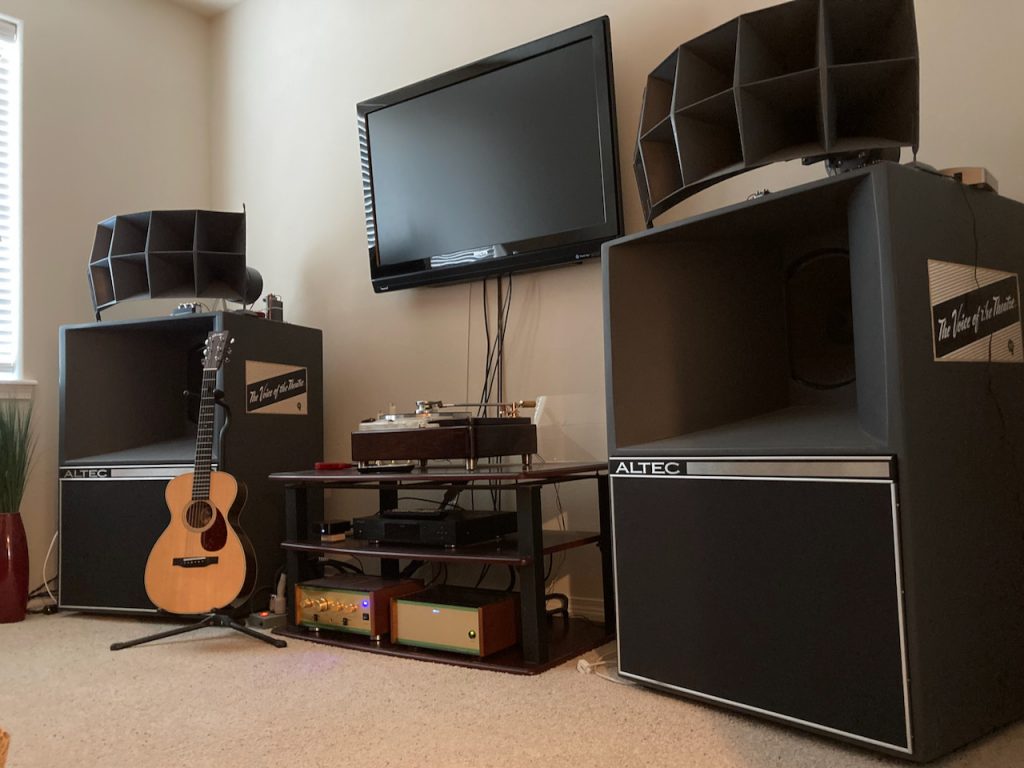
Vintage Altec A5 Voice of the Theatre loudspeakers.
Speaking of vintage Altec loudspeakers, in my audio-visual system I have a pair of vintage Altec A5 Voice of the Theatre loudspeakers that make watching movies and television shows a transcendent experience.
I optimized my A5's crossovers for corner placement of the speakers in a smaller room (a spare bedroom), rather than for the usual 300 seat small town movie theater they were originally intended for.
It's amazing how good the A5s are in a smaller space, for near-field listening, when the crossovers are dialed in correctly.
The big A5s cast an illusion that places me 'inside' the movie experience or musical performance, rather that just having me as an observer looking from the outside in.
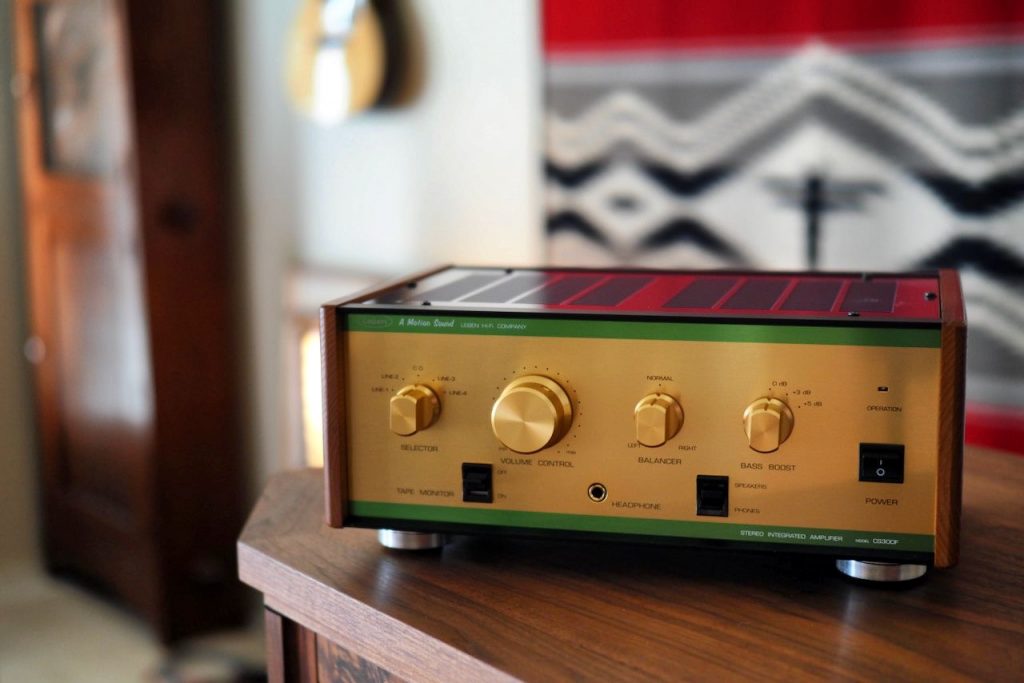
Leben Hi-Fi Stereo Company CS-300F integrated amplifier.
The beautiful little Leben Hi-Fi Stereo Company CS-300F integrated amplifier (more HERE) has been getting plenty of run-in time in my audio-visual system.

Leben CS-300F.
As I reported in my first listening impressions with my Westminster Royale SE loudspeakers, after unboxing the CS-300F:
"The CS-300F had zero run-in time on it, but sounded very impressive on the well-recorded jazz guitar CDs I listened to after powering it up. There was a relaxed clarity to the sound that was very intriguing. Clear, resolving, linear, transparent, etc., but still nicely musical. Not bright, forward, or harsh at all, was my initial impression."
"However, later in the evening when I played some vintage AML Russian classical 78 transfers to CD, the CS-300F emphasized the 78's recording quality issues more than I am used to hearing from my Westminsters with the other amplification electronics I have on hand."
After that I installed the Leben CS-300F into my audio-visual system, and it went through a period during its run-in time where it sounded positively dreadful.
I couldn't turn up the volume past a whisper without being assaulted by the sound quality, with the CS-300F sounding hard, harsh, forward, and generally unpleasant on everything.
Then as the CS-300F accumulated more run-in time it settled down, started sounding pretty good on most things, and brilliant on a few.
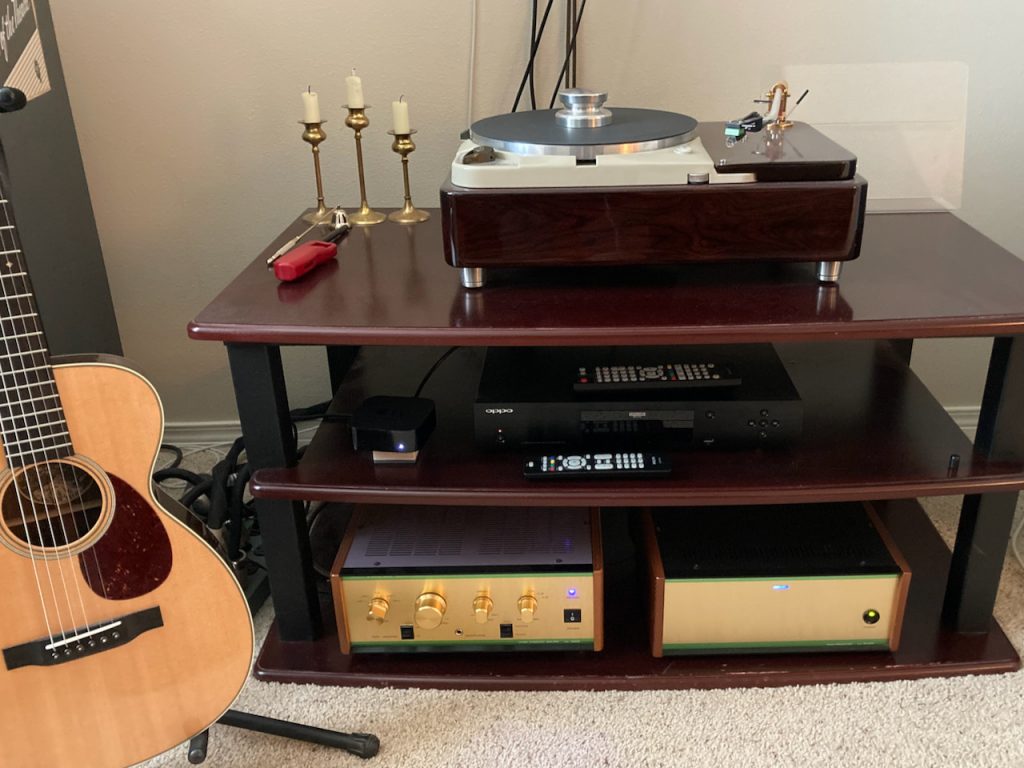
Now after extended run-in, the CS-300F's capacitors, resistors, vacuum tubes, etc., have all settled down, and the CS-300F is sounding truly impressive on the A5s most of the time.
I think that with a little more fine-tuning with cables I can get the CS-300F sounding brilliant all of the time.
The moral of the story is to not get too excited about what I'm hearing until a component is fully run-in, which was the case with the CS-300F more than most.
Another aspect of the CS-300F's performance that is worth noting, is that with ultra-sensitive loudspeakers like the A5s an amplifier has to be very quiet operationally, or you can hear the noise through the loudspeakers. The CS-300F is dead quiet operationally. Kudos to Leben on that point.
The CS-300F is astonishingly vivid, transparent, and resolving. In movies I'm immersed in foley - the sound effects that are added to films - to an extraordinary degree. Those aspects of the CS-300F's performance are very impressive, and now I am beginning to understand why Leben enthusiasts are so excited about the CS-300F.
The CS-300F's turn for a feature article at Positive Feedback is coming up right after I finish the First Watt F8 stereo amplifier article.
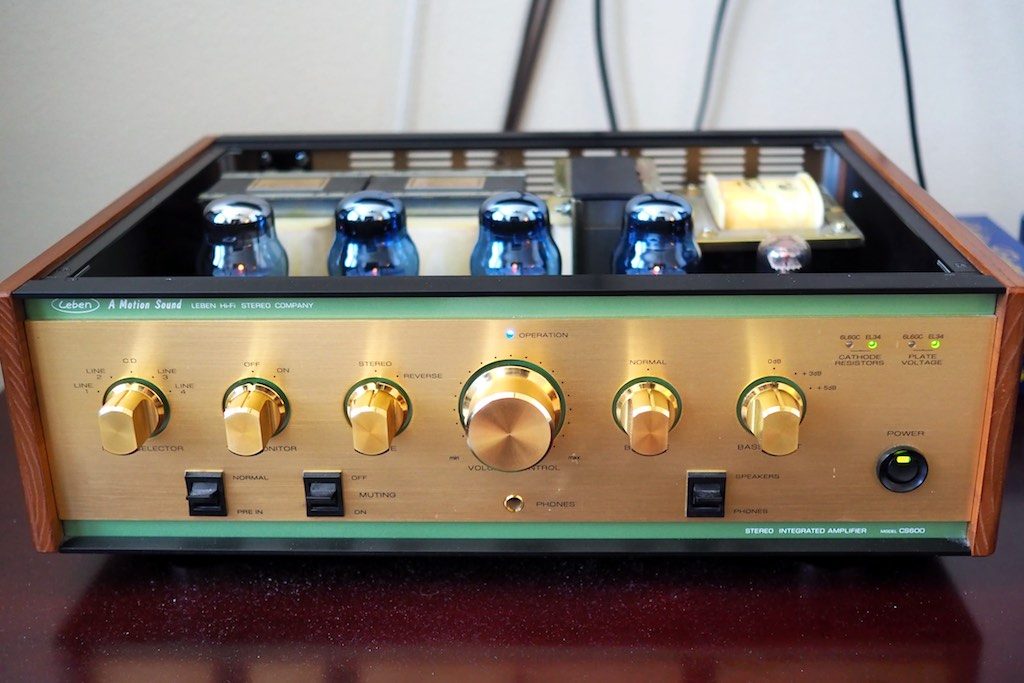
Leben CS-600 with Sophia Electric EL34-ST tubes.
I'll be looking forward to comparing the CS-300F's performance to that of my long-time Leben favorite, the Leben CS-600, which has kept me a satisfied owner going on 15 years now.
Ok, that's all for now. Much more to come.

As always, thanks for stopping by, and may the tone be with you!





























